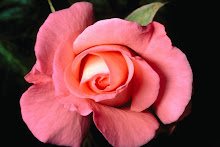Birth Flower for November
The language, legends and history for the Chrysanthemum; the flower for those born in the month of November.
Every flower has a history and every flower symbolizes something. Often the history and symbols are confusing and contradictory but they are still fascinating. If your birthday is in the month of November, your flower is the Chrysanthemum. Here is the story and language of your flower.
Linguistic Roots for the Name Chrysanthemum or Mum
The name chrysanthemum comes from two Greek words chrysos, which means gold, and anthos, which means flower. The reference to gold comes from the fact that in the Mediterranean the Chrysanthemum coronarium was a golden-yellow flower used in garlands intended to deter demons. Perhaps because a raised eyebrow indicates displeasure the flower was also known as Dios ophrya, which means God’s eyebrow. Perhaps they hoped that the reference to God’s eyebrow would scare away the demons.Another common chrysanthemum is the European flower variously known as feverfew, featherfew or tansie. Historically, the tansy was used to reduce fevers in those who were ill. The Latin name for the tansy is Chrysanthemum parthenium.
Several flowers that are often referred to as daisies are categorically, mums. They are the ox-eye daisy, painted daisy, and shasta daisy.
The History of Mums
The oldest variety of chrysanthemum is the Chinese chrysanthemum, which was a daisy-like plant in China. It was cultivated for nearly 2,500 years before it made its way to Europe.
In China, the chrysanthemum was often used to symbolize a scholar in retirement because the poet T’ao Yuan-Ming retired to his mum garden rather than accept a position from the Emperor. He said he preferred “to pick chrysanthemums from the hedges, entertain his friends, and get drunk” (Wells, 41).
The Chinese also felt that the chrysanthemum promoted longevity and made wines and medicine from infusions of its leaves and petals. The dew collected from mums was supposed to be particularly effective in increasing the lifespan of those who ingested it. As a result, the mum was also considered one of the four noble plants in China along with bamboo, plum, and orchid.
The Japanese were first introduced to the chrysanthemum in 400 A.D. by Zen Buddhist monks. It became a symbol of the Mikado and was displayed as a sixteen petaled mum made to look like the Rising Sun.
In Italy, the mum is a funeral flower and is associated with the dead.
Speaking with the Chrysanthemum
Traditional books about the language of flowers include the following meanings for the mum: cheerfulness, you're a wonderful friend, rest; loveliness, abundance, wealth. Historically, the mum could also symbolize a scholarly isolation, longevity, or death.


No comments:
Post a Comment